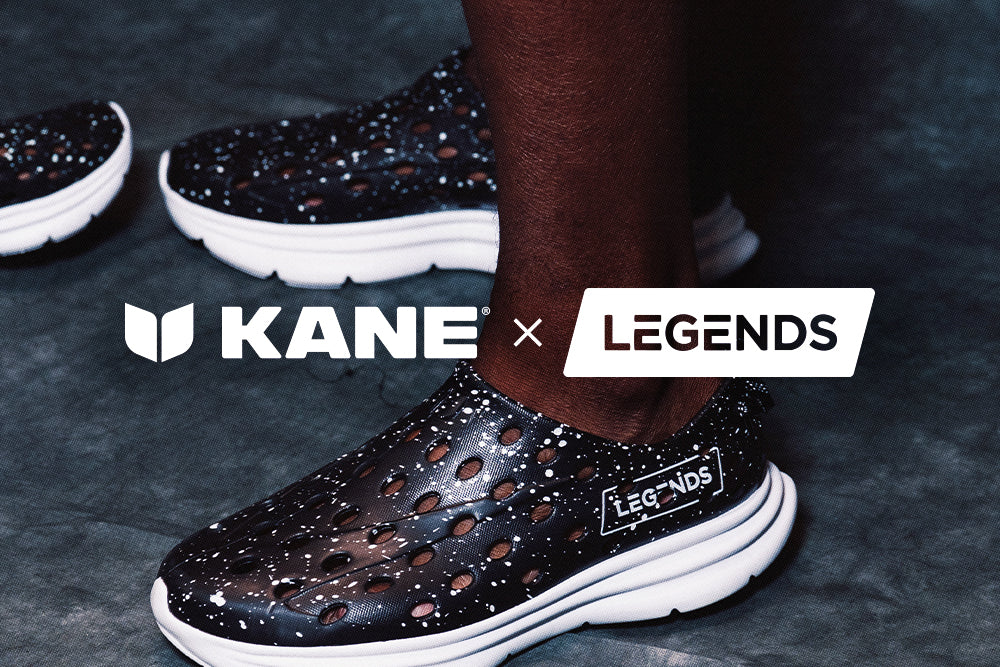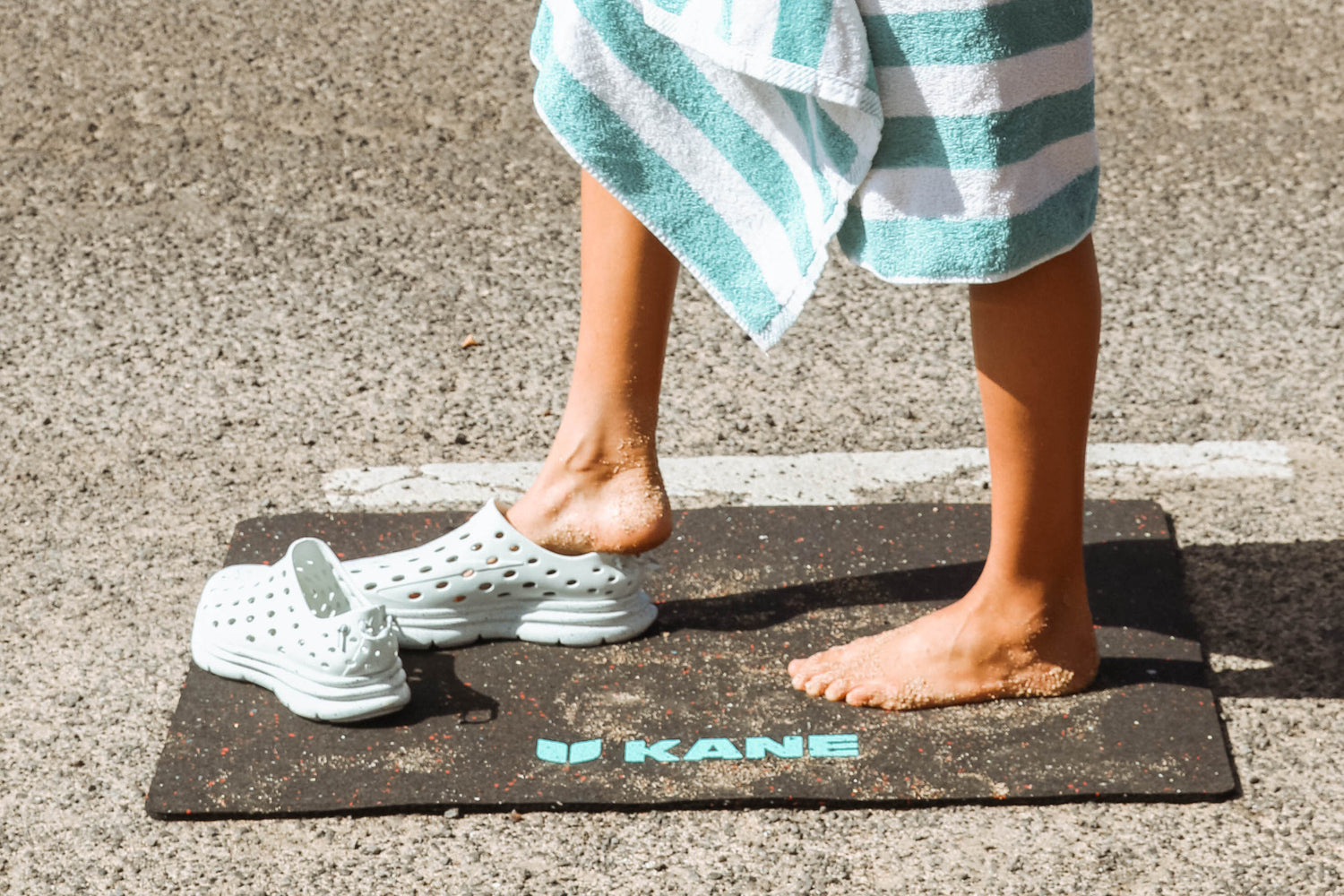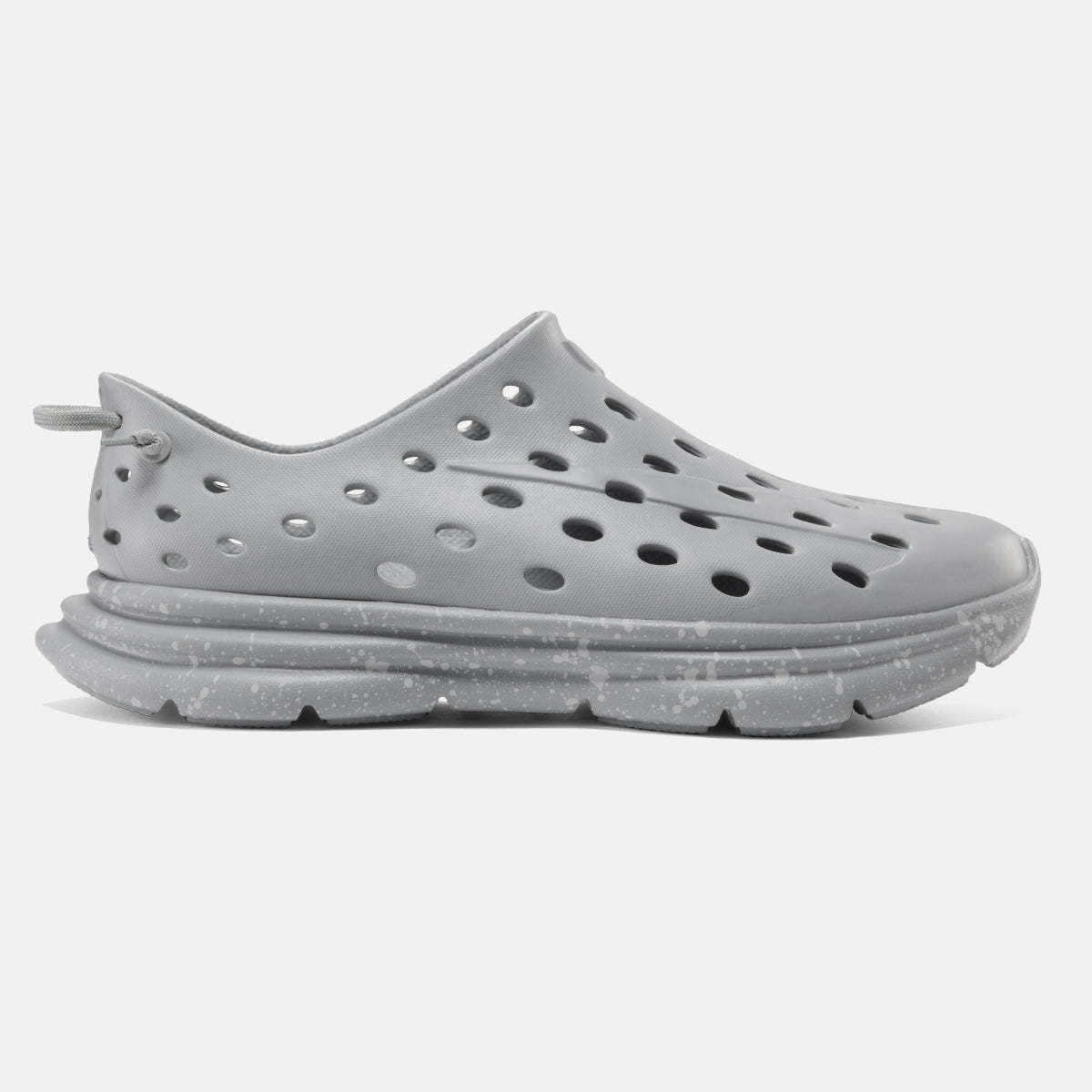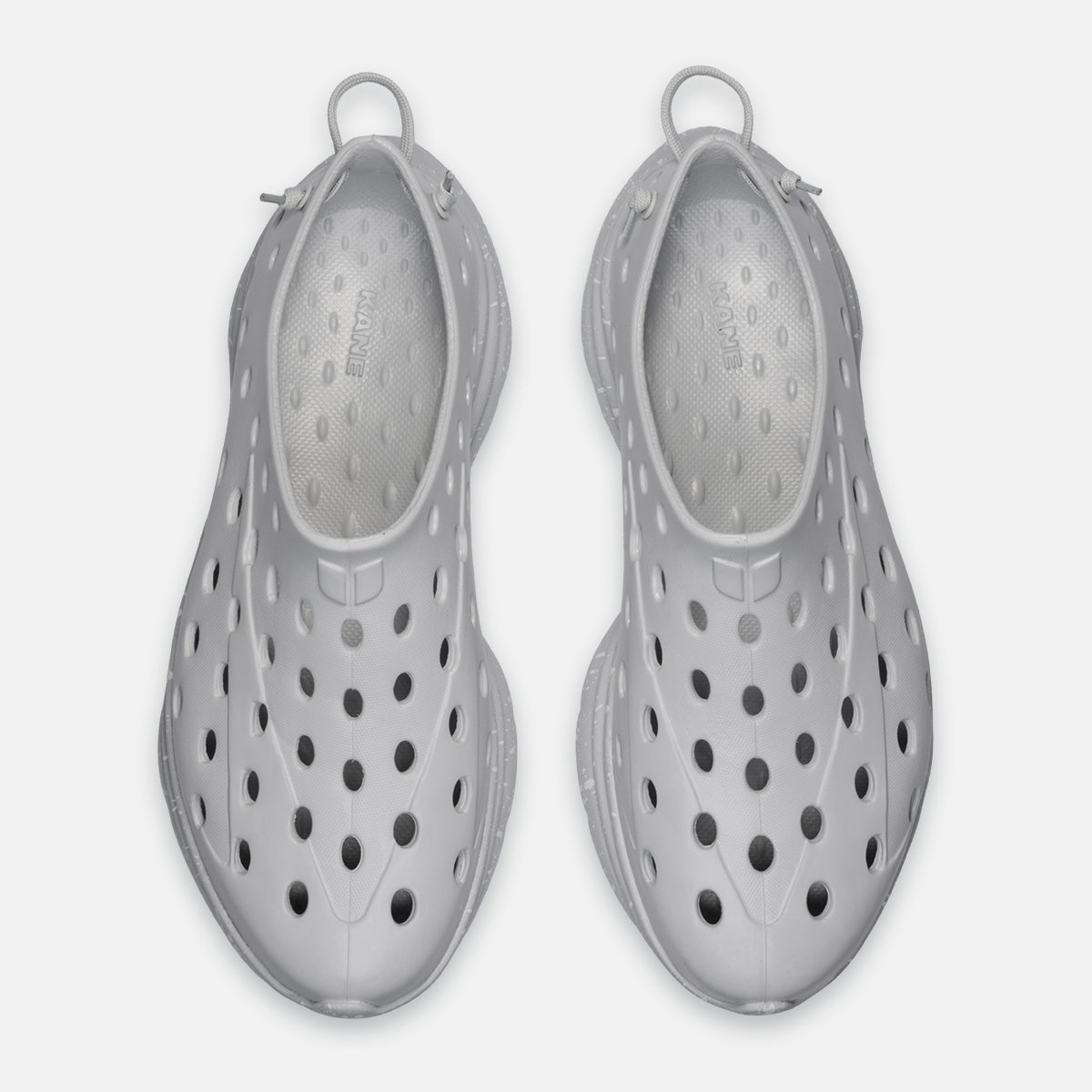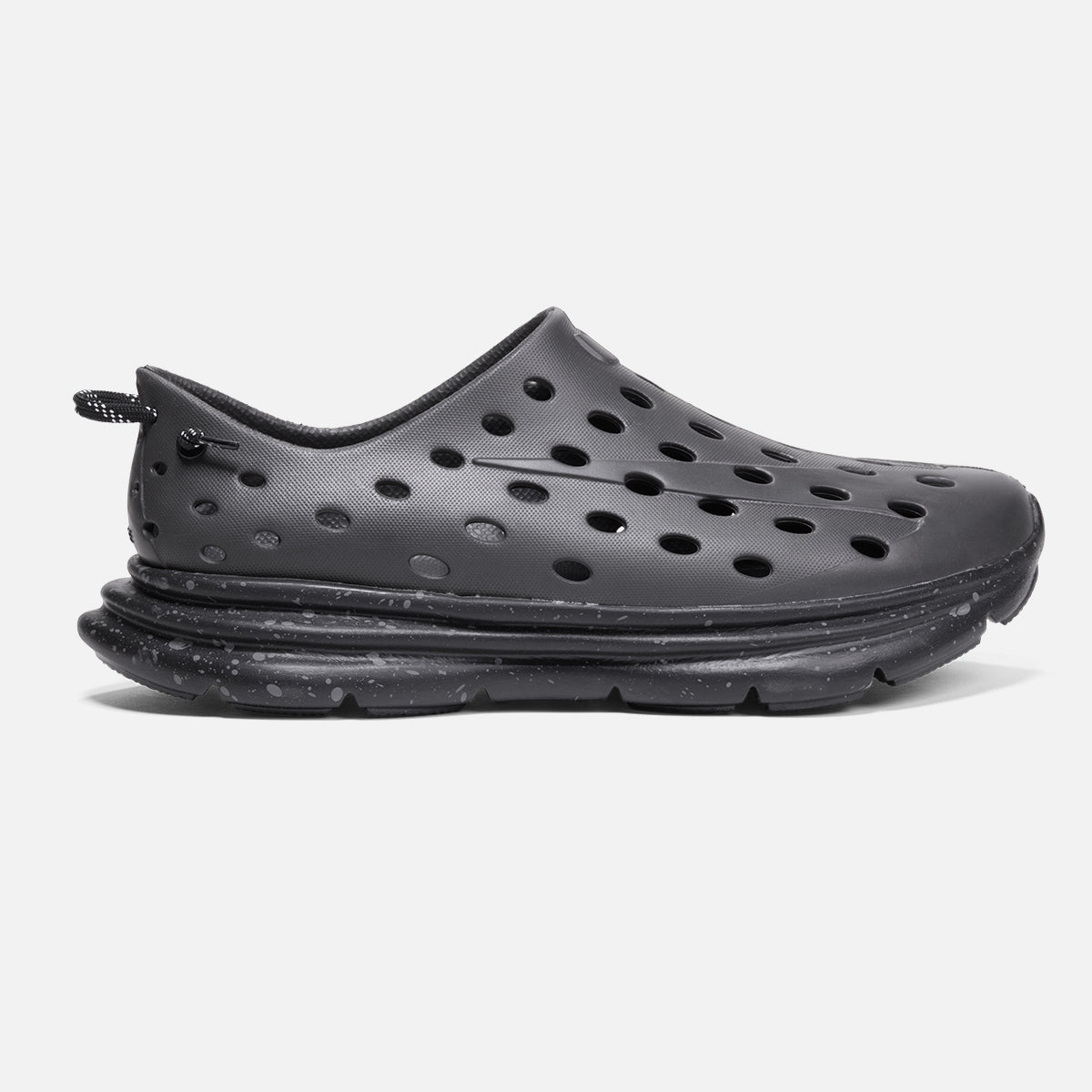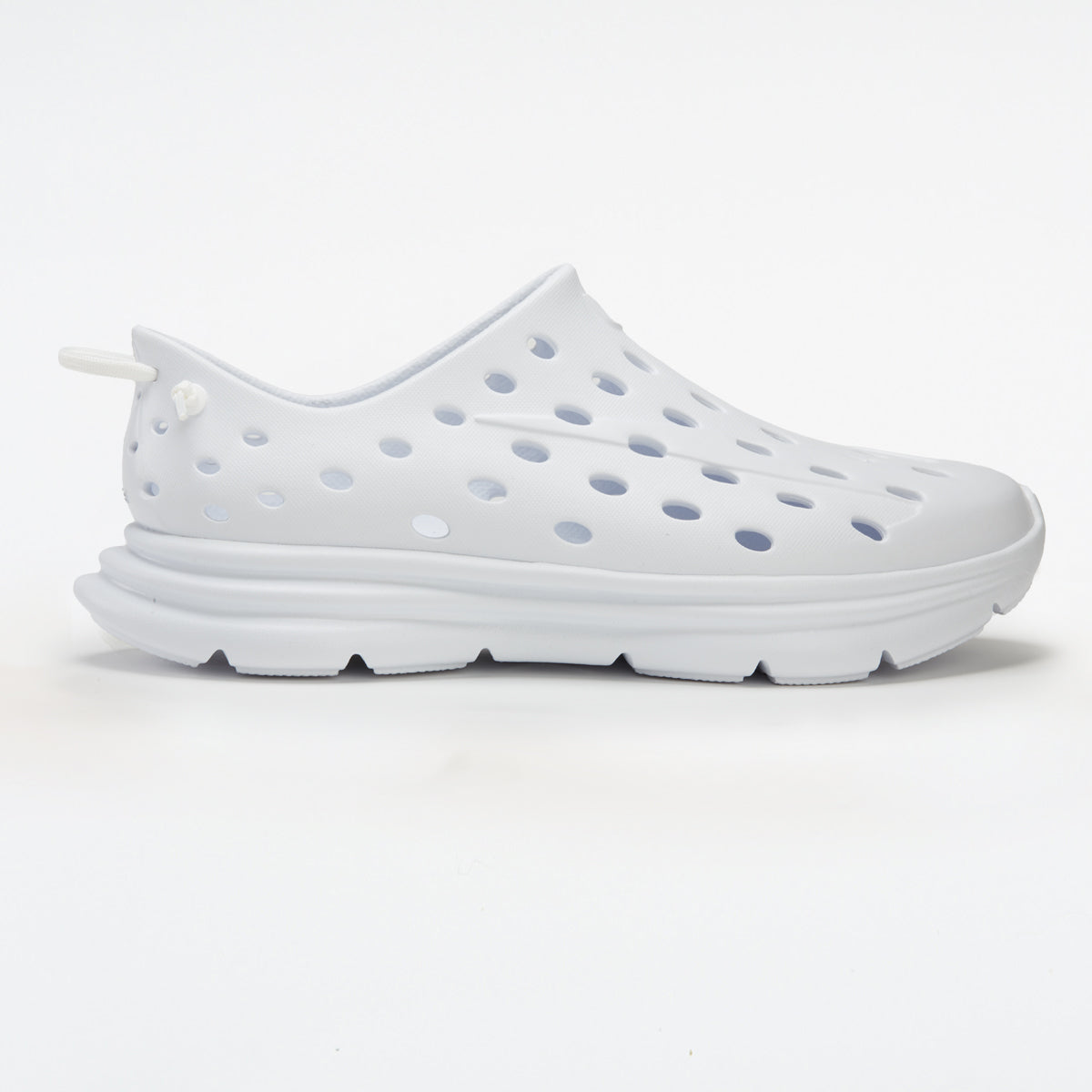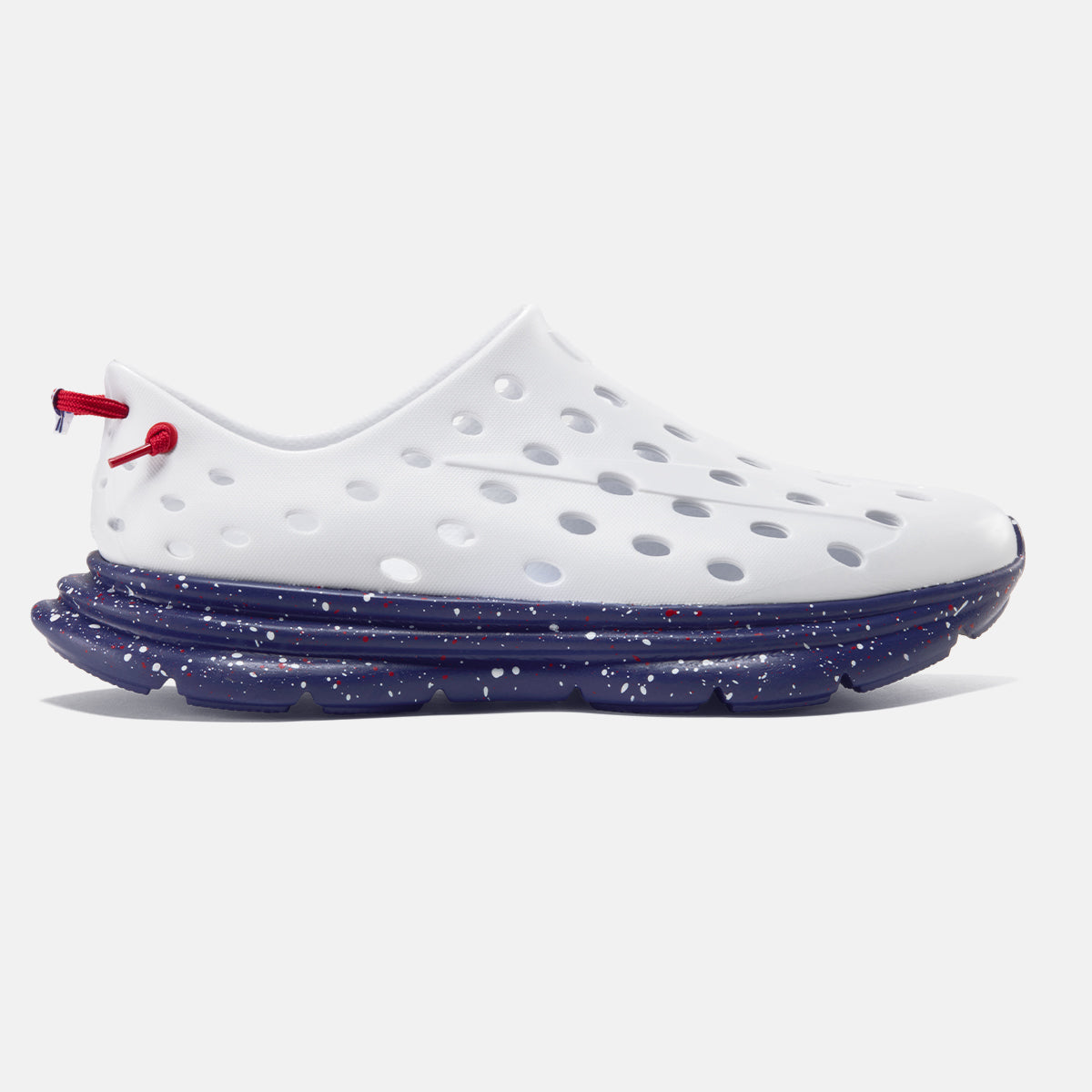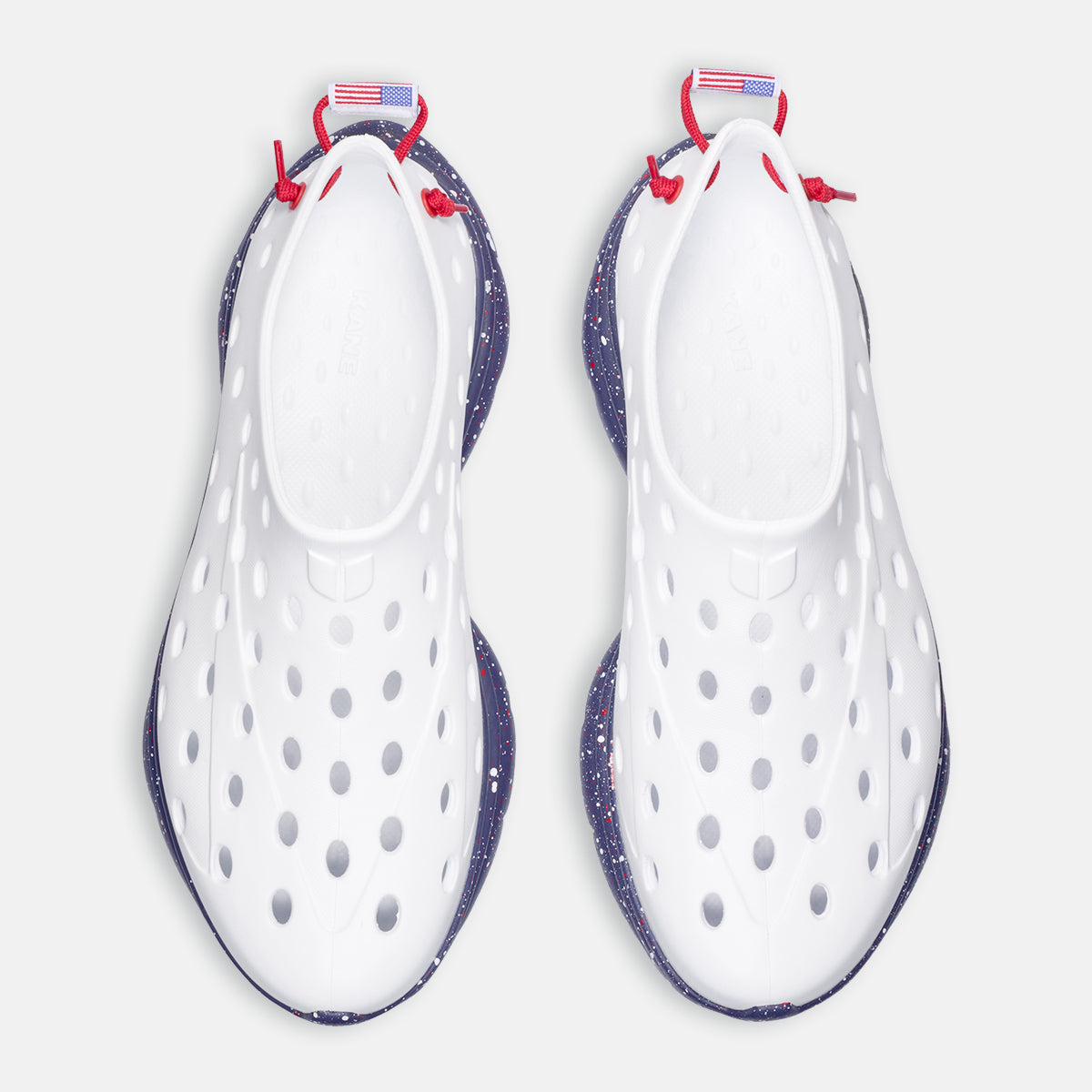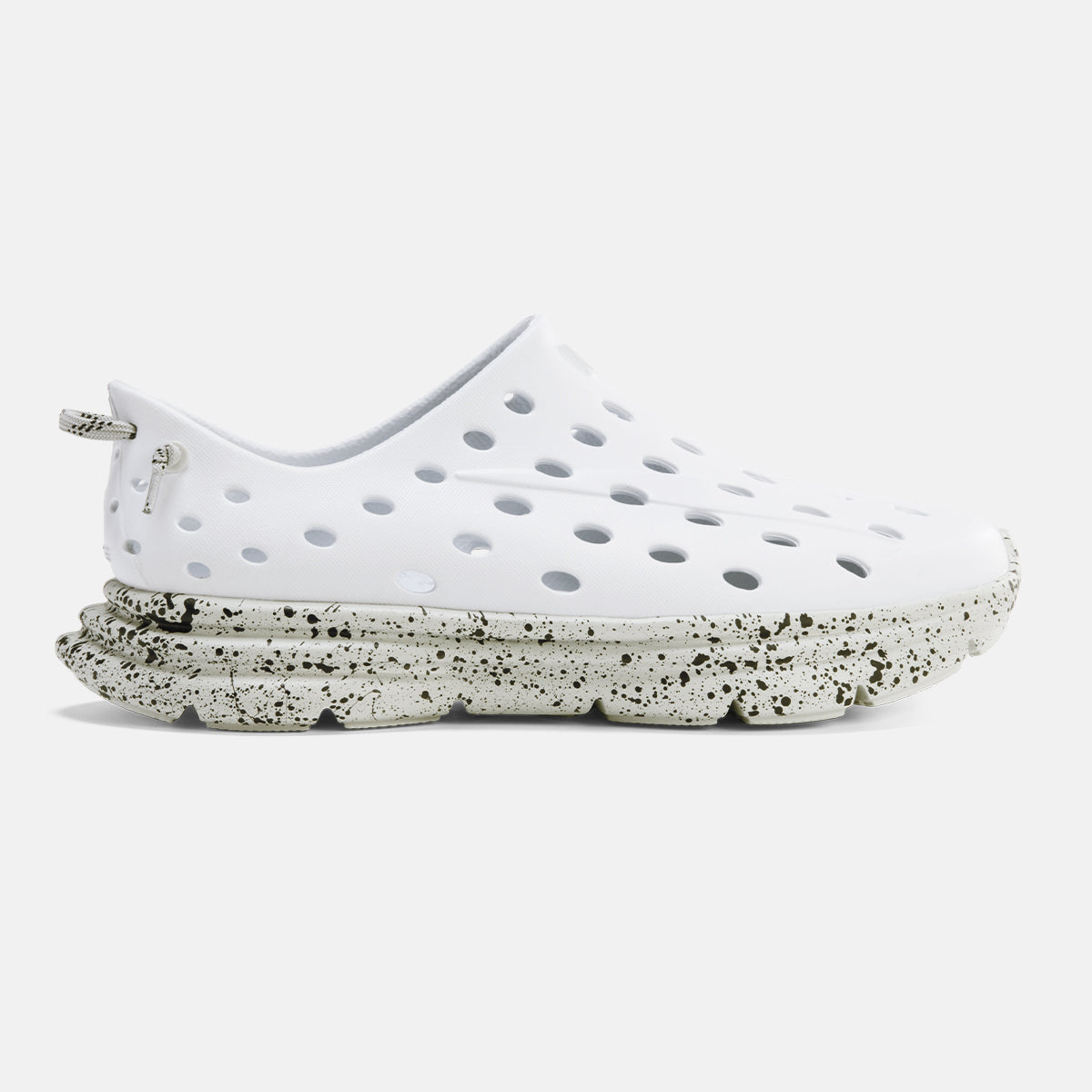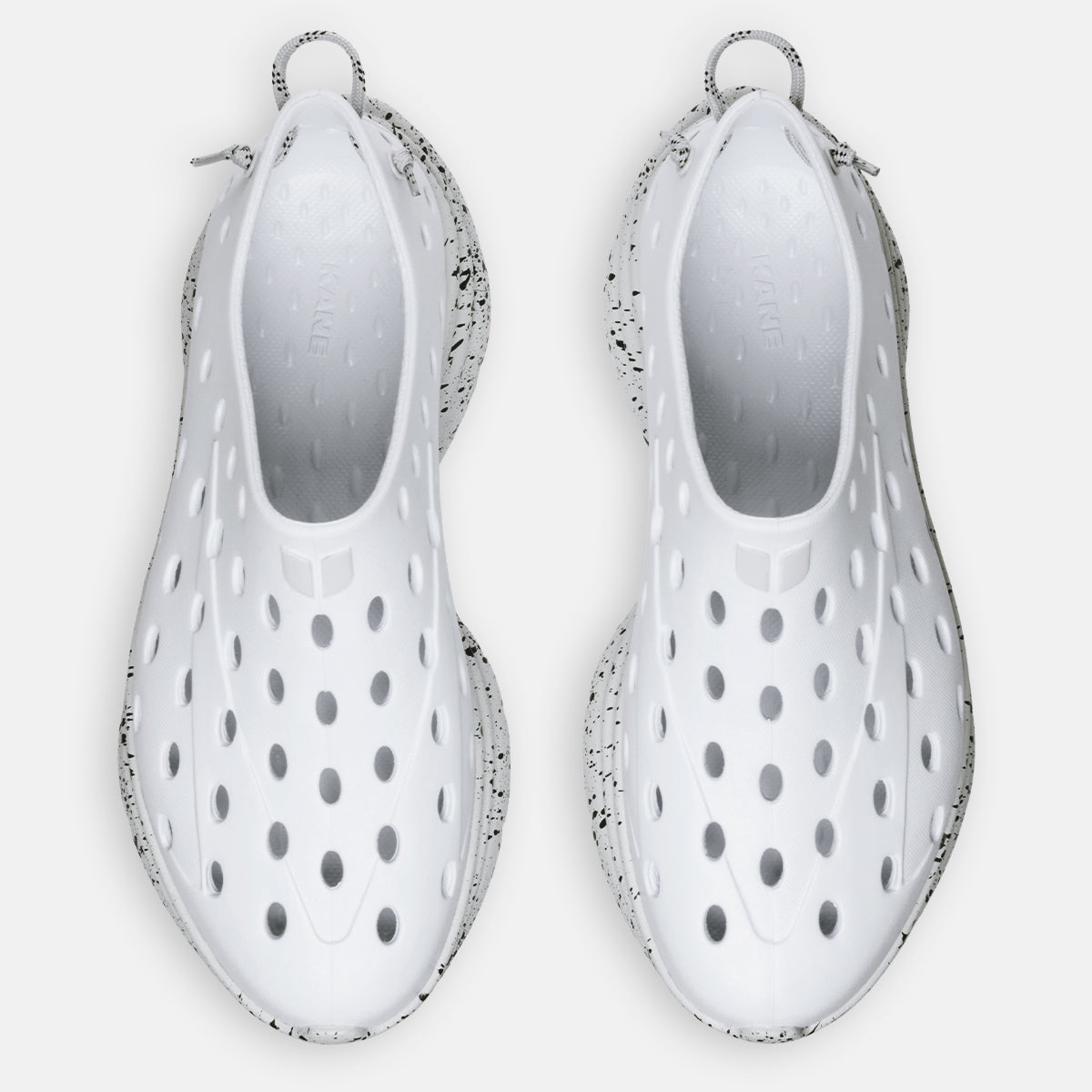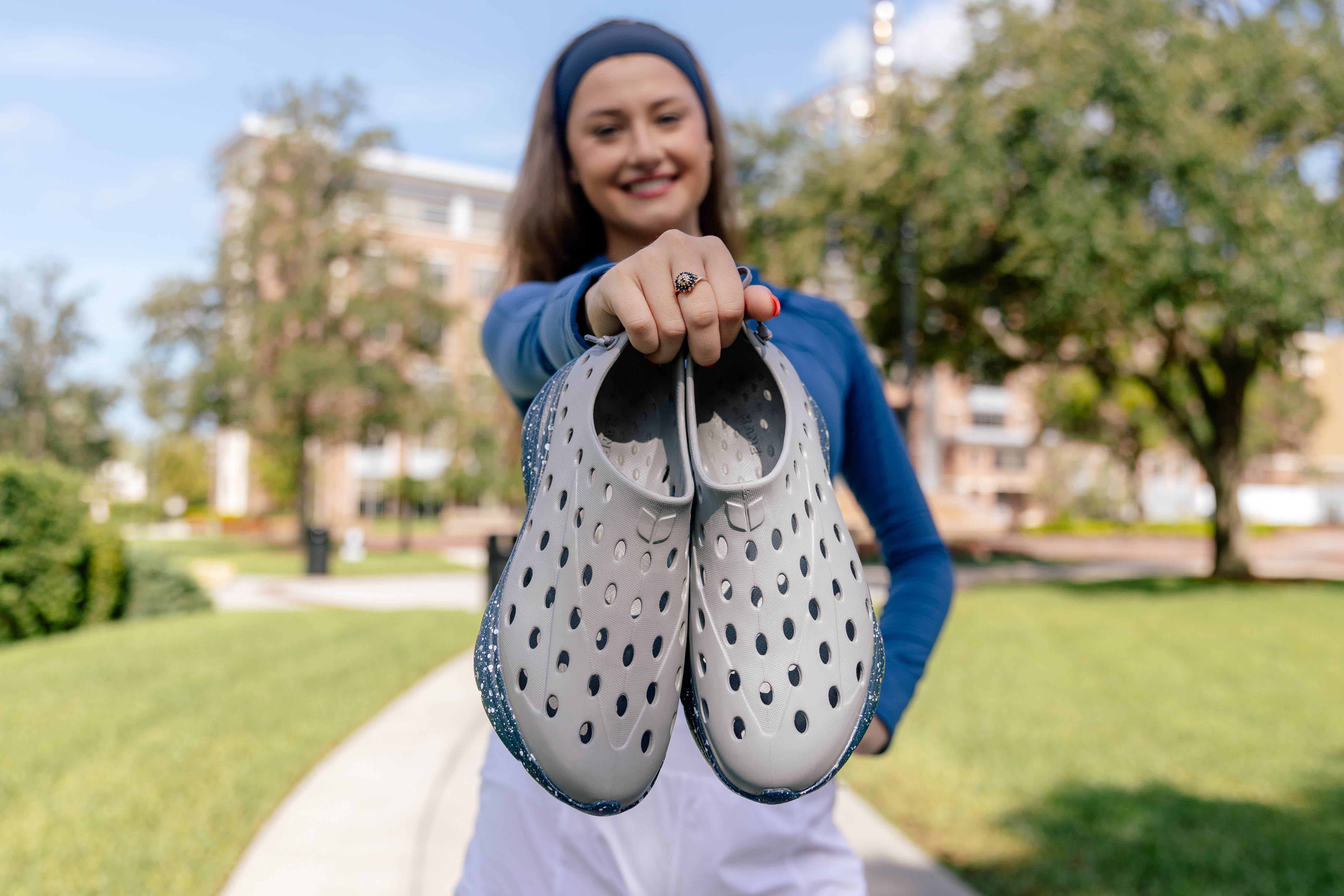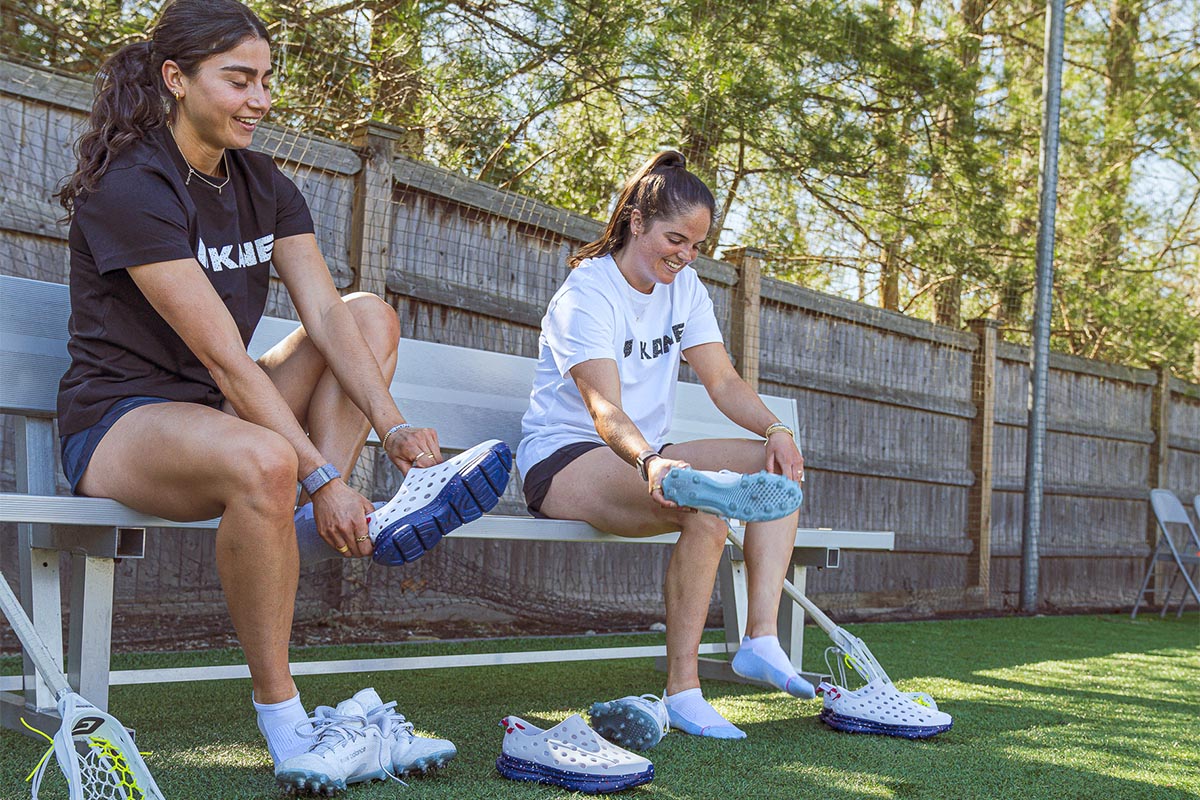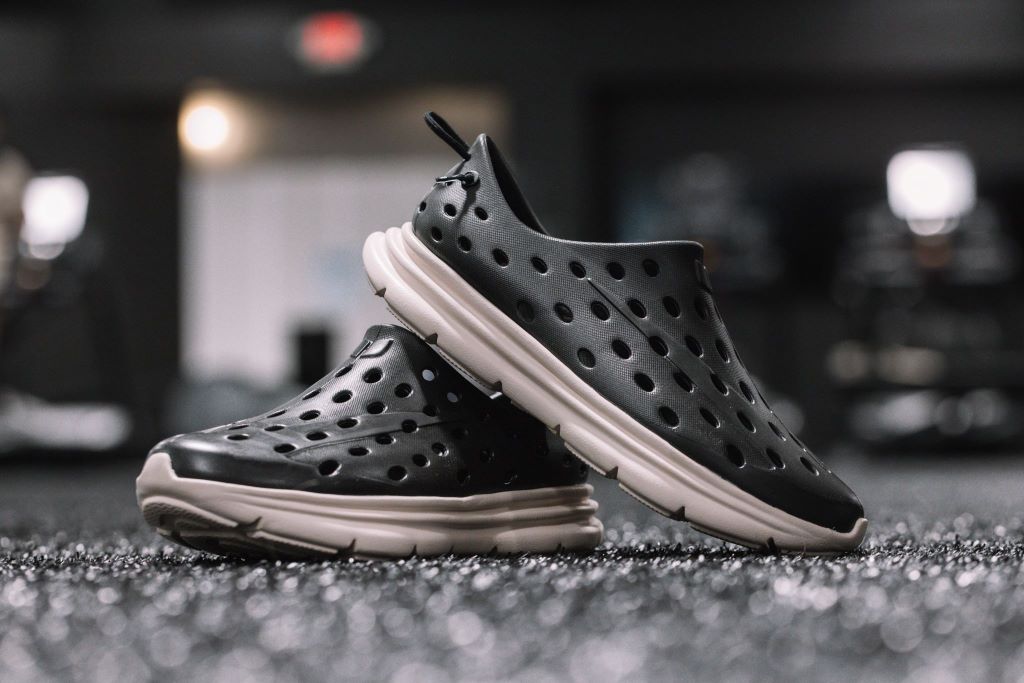Overpronation is a common issue where the foot rolls inward excessively during normal walking or running. Choosing shoes that provide proper support and stability is essential if you have overpronation.
Always try on shoes and walk around the store to get a feel for how they support your feet. Consult with a knowledgeable salesperson or a podiatrist who can provide guidance based on your specific foot characteristics and other considerations.
Here are 12 features to look for in a recovery shoe for overpronation:
12 things to look for in shoes for overpronation
1. Arch support
Overpronation often occurs in individuals with low arches or flat feet. Look for shoes that offer adequate arch support to help maintain the foot's natural alignment. This support is typically built into the midsole of the shoe.
2. Motion control technology
Shoes with motion control technology are designed to prevent the foot from rolling inward excessively. Designers achieve this through features like a reinforced medial post—a firmer material on the inner side of the shoe to provide extra support and limit pronation.
3. Medial post or dual-density midsole
A medial post is a part of the midsole that is denser on the inner side, providing additional support where overpronation is common. Dual-density midsoles have varying firmness levels throughout, with the inner side being firmer to control pronation.
4. Firm midsole
A firm midsole is essential for controlling overpronation. The firmer foam prevents the foot from rolling too far inward, promoting a more stable gait. However, finding a balance is crucial, as some may find excessively firm foam midsoles uncomfortable.
5. Heel counter
The heel counter is the part of the shoe that wraps around the back of the heel. A sturdy and supportive heel counter helps stabilize the rearfoot and prevents it from excessively rolling inward.
6. Structured cushioning
While cushioning is essential for comfort, it should be structured to provide support. It's important that the foot feels cushioned but not at the expense of stability. Look for cushioned running shoes (such as New Balance Fresh Foam) that balance comfort and stability well.
7. Fit and sizing
Proper fit is crucial for any shoe, especially those designed for overpronation. The shoe should fit the contours of your foot comfortably, providing support without being too tight. Ensure there is enough room for your toes and the arch support aligns with your foot's arch.
8. Outsole design
The outsole should provide stability and traction. Look for shoes with a durable and well-designed outsole that supports a smooth and stable stride.
9. Breathability
While not directly related to overpronation, a breathable upper (the top part of the shoe) can enhance overall comfort, especially during more extended periods of wear. Breathability is particularly relevant in athletic shoes.
10. Removable insoles
Shoes with removable insoles provide flexibility if you use custom orthotic insoles. You can replace the manufacturer's insoles with your orthotics for personalized support.
11. Weight
The shoe's overall weight can impact comfort, especially during physical activities. While not a primary factor for overpronation, some may prefer lighter shoes.
12. Running vs. walking shoes
If you're looking for a stability shoe for a specific activity (running or walking), choose a model designed for that purpose. Running shoes, for example, are engineered to withstand the impact of running and may have additional features for stability.
How to determine if you need a stability shoe for overpronation
Determining whether you need running shoes for overpronation involves assessing your foot arch, observing your gait, and considering any discomfort or pain you may experience during or after running. Here are some steps to help you determine if you overpronate and need running shoes designed for this condition:
Foot arch assessment
Check the arch of your foot. Overpronation is often associated with low arches or flat feet. You can perform a simple "wet test" by wetting the sole of your foot and standing on a surface that will show the wet footprint (like a piece of paper or cardboard). You may have low arches or flat feet if the entire sole is visible with little or no curve along the inner edge.
Gait analysis
Analyze your natural walking or running gait. You can do this by observing yourself or, for a more accurate assessment, seek the assistance of a running specialist or podiatrist who can analyze your gait.
Check your shoes
Examine the wear patterns on your current shoes. Overpronation often leads to increased wear on the inner side of the shoe sole. It may indicate overpronation if you notice significant wear on the inner edge of your shoe, especially around the heel and forefoot areas.
Foot discomfort or pain
Pay attention to any discomfort or pain you may experience while running. Overpronation can contribute to shin splints, knee pain, and discomfort in the arches or ankles. If you frequently experience pain in these areas, it could be a sign of overpronation.
Visit a specialty running store or podiatrist
Seek professional advice. Visit a specialty running store where knowledgeable staff can assess your gait and recommend suitable running shoes based on your foot type. Alternatively, consult a podiatrist or healthcare professional for a more in-depth analysis.
Consider previous injuries
Recurring injuries or discomfort, especially in the lower extremities, could be related to overpronation. Take note of any patterns and discuss them with a professional.
Remember that everyone's feet are unique, and factors such as age, weight, and running style can also influence the need for specific running shoe features. If you need more clarification about your foot type or running mechanics, a professional can provide personalized recommendations for the most appropriate running shoes.
Good shoe choices for overpronation
When trying to find the right type of shoe, it's essential to consider the severity of your overpronation and any specific preferences for cushioning and fit. A professional fitting or consulting with a podiatrist can provide personalized recommendations based on your unique foot characteristics and gait.
When looking for shoes to address overpronation, it's helpful to consider specific types or categories rather than focusing solely on brands. Different brands offer various models with features suitable for overpronators. Here are 9 types of shoes to look for:
1. Motion control shoes
Shoes with motion control are designed for severe overpronation. They typically feature a stiff and supportive midsole, a firm heel counter, and other technologies to limit the foot from rolling inward excessively.
2. Stability shoes
Stability shoes are a more common choice for mild to moderate overpronation. They offer balanced cushioning and support, often incorporating features like a medial post to help control pronation, create stability and reduce injury risk.
3. Structured cushioning shoes
These shoes provide a good combination of cushioning and support. They are suitable for individuals with overpronation who require a balance between comfort and stability.
4. Orthotic-friendly shoes
Shoes with a removable insole are suitable for accommodating custom orthotic inserts. If you use orthotics to address overpronation, choose shoes with a design that allows you to replace the insole with your own.
5. Running shoes with arch support
Overpronation is often associated with low arches or flat feet. Look for running shoes with built-in arch support to help maintain proper foot alignment while helping running performance.
6. Trail running shoes for overpronation
If you enjoy trail running and overpronate, consider trail running shoes that provide both stability and traction on uneven surfaces. Look for features like a reinforced upper and durable outsole.
7. Light stability shoes
Light stability shoes are a good option for those needing some pronation control but prefer a more lightweight and flexible shoe. They offer a balance between support and a more natural feel.
8. Walking shoes for overpronation
Consider walking shoes designed for stability and a secure fit if you're primarily walking and overpronate. These shoes often have a supportive midsole and comfortable features for extended periods of walking.
9. Recovery shoes
Recovery shoes, also known as post-workout or post-activity shoes, are footwear specifically designed to support recovery after physical exercise or strenuous activities, including standing all day at work.
These shoes aim to provide comfort, cushioning, and support to the feet and lower limbs, helping to alleviate muscle fatigue, promote circulation, and facilitate the body's natural recovery mechanisms. Active recovery shoes typically have certain features that set them apart from regular athletic or casual footwear.
Discover Kane Recovery Shoes!
Kane’s recovery shoes provide excellent support, comfort, and durability for those in need of top-notch recuperative footwear. Featuring an adjustable hook-and-loop single strap synthetic upper, plush TPR footbed, as well as a durable injected EVA outsole, these kicks come with all the right features to assist you during your rehabilitation journey.
Aside from providing quality products, they are also committed to sustainability, having made plans to become a B Corp while dedicating 1% of their overall profits towards environmental charities.
When and how to wear Kane Revive
The best moment to wear most recovery shoes is directly after a strenuous physical activity such as running or exercising. This helps minimize inflammation and launch the healing process. To guarantee maximum comfort and effective recuperation, make sure that you are wearing your recovery footwear correctly by tying up laces securely for a snug fit around your feet.
Can you correct overpronation when running?
While you may not be able to completely "correct" overpronation, you can manage and reduce its impact (especially on long-distance runs) through various strategies. Here are some approaches to address and minimize overpronation when running:
Wear appropriate footwear
Choose from specific overpronation running shoes. Most stability shoes have extra support features, such as medial posts, which can help control the inward rolling of the foot.
Custom orthotics
Consider using custom orthotic insoles prescribed by a podiatrist. These can provide additional support and help address specific issues related to your foot structure, such as a high arch, wide feet or narrow feet.
Strengthening exercises
Perform strengthening exercises for the muscles that support the arch and stabilize the ankle. These exercises may target the calf, peroneal, and intrinsic foot muscles.
Stretching exercises
Stretch tight muscles that may contribute to overpronation. Focus on stretching the calves, Achilles tendon, and inner thigh muscles.
Footwear transition
If you are considering transitioning to a minimalist or barefoot-style shoe, do so gradually and under the guidance of a healthcare professional. Abrupt changes in footwear can lead to discomfort or injuries.
Gait analysis
Consult a specialist for a gait analysis, which can help identify specific issues in your running form and guide recommendations for corrective measures.
Focus on running form
Be mindful of your running form. Avoid overstriding and maintain a more neutral position during your gait cycle.
Strength training for core and hips
Strengthening the core and hip muscles can contribute to better overall stability, which may positively impact your gait and pronation pattern.
Consult a professional
If you experience persistent pain or discomfort, consult a podiatrist, physical therapist, or sports medicine professional. They can provide personalized advice and treatment options.
Eliminating overpronation may not be realistic for everyone. However, by incorporating these strategies, you can often manage and alleviate the impact of overpronation, reducing the risk of associated injuries and discomfort. Always seek professional guidance for a comprehensive evaluation and personalized recommendations based on your needs and conditions.
What is the difference between a stability running shoe and a neutral shoe?
The main difference between stability and neutral shoes lies in their design for different pronation patterns:
Neutral running shoes are for runners with a neutral or supinated (underpronated) gait. Characteristics include a uniform midsole, which prioritizes cushioning and flexibility and is suitable for those without overpronation.
Stability running shoes are for runners with less severe overpronation. Characteristics include additional support features (for example, medial posts) to control overpronation and promote neutral alignment.
Choosing between a neutral trainer and a stability shoe depends on your pronation pattern and specific support needs.
Do overpronators need stability shoes?
While stability shoes are often recommended for overpronators, the need can vary among individuals. A stability shoe is designed to address overpronation by providing additional support and control to the foot. It typically includes features such as a midsole with dual-density, a medial post, or other technologies to help prevent excessive inward rolling and promote a more neutral gait.
However, the choice of footwear for overpronators is not one-size-fits-all. Here are some considerations:
Severity of overpronation
The severity of overpronation varies among individuals. While some people may have a mild overpronation that doesn't significantly impact their gait, others may experience a more pronounced inward roll of the foot. The severity can influence the type of shoe recommended.
Individual biomechanics
Everyone's biomechanics are unique. Factors such as foot structure, arch height, and the degree of overpronation can influence the type of shoe that provides the most benefit. Some individuals with mild overpronation may find sufficient support from neutral or cushioned shoes.
Comfort and preference
Comfort is a critical factor in choosing footwear for running or walking. Some individuals with overpronation may find stability shoes comfortable and practical, while others may prefer the feel of neutral shoes. It's essential to wear footwear that feels right for you.
Running style and activities
The physical activity you engage in can impact the shoe you need. Runners, for example, may benefit from a shoe with specific stability features, especially if they run frequently or cover longer distances.
Orthotic use
Some overpronators may use custom orthotic insoles to address their specific foot needs. In such cases, footwear that accommodates orthotics may be more suitable, regardless of whether they are labeled stability shoes.
Consult a running shoe store specialist or podiatrist to determine the most appropriate footwear. A gait analysis can provide valuable insights into your biomechanics, helping professionals make personalized recommendations. Trying on different shoes and assessing comfort and support is crucial in finding the right fit for you, whether it's a stability shoe or another type that meets your needs.
Frequently asked questions
What shoes should you wear if you overpronate?
If you overpronate, wearing a shoe that provides proper support and stability is essential to help address the biomechanical issues associated with this condition.
It's crucial to remember that the best shoes for overpronation can vary from person to person. Factors such as foot shape, gait, and personal comfort preferences play a role in finding the right pair. Consider consulting a running shoe store specialist for a professional fitting and recommendations based on your specific needs. If you have significant foot concerns or pain, consult a podiatrist or healthcare professional for personalized guidance.
Do barefoot shoes fix overpronation?
Barefoot shoes, also known as minimalist shoes, are designed to mimic the experience of walking or running barefoot. They typically have a flexible sole, minimal cushioning, and a low-profile design. While some proponents argue that barefoot shoes can help improve foot strength and natural gait, there isn't conclusive evidence that they can "fix" overpronation for everyone.
Overpronation is a biomechanical issue where the foot rolls inward excessively. The idea behind barefoot or minimalist shoes is that they allow the foot to move more naturally and may strengthen the foot and lower leg muscles. However, the effectiveness of these shoes in addressing overpronation depends on various factors:
Individual response
People respond differently to barefoot or minimalist shoes. Some may find these shoes help improve foot strength and stability, potentially reducing overpronation. Others may experience different benefits or find that the lack of support exacerbates their issues.
Transition period
Transitioning to barefoot shoes should be gradual. Abruptly switching from traditional, supportive shoes to minimalist shoes can lead to discomfort or injury. It's essential to allow your feet and muscles time to adapt to the new footwear style.
Foot structure and biomechanics
The effectiveness of barefoot shoes may depend on individual foot structure and biomechanics. Factors such as arch height, muscle strength, and joint flexibility can influence how well someone adapts to minimalist footwear.
Activities and surfaces
The activities you engage in and the surfaces you walk or run on can impact the suitability of barefoot shoes. Some may find these shoes comfortable for walking on softer surfaces, while other runners may prefer more support for running on hard pavement.
Existing foot conditions
If you have existing foot conditions or severe overpronation, it's crucial to consult with a healthcare professional before transitioning to barefoot shoes. Certain conditions may require more support and structure to manage symptoms effectively.
While some people with mild overpronation may find relief or improvement in symptoms by incorporating barefoot or minimalist shoes into their routine, it's not a one-size-fits-all solution. If you're considering transitioning to barefoot shoes, you should do so slowly and monitor how your body responds. Consulting with a podiatrist or other healthcare professional can provide personalized guidance based on your foot characteristics and existing conditions.
What running shoes are best for pronation?
The best running shoes for pronation depend on the degree of pronation, individual biomechanics, and personal preferences. Pronation is a natural part of the gait cycle, but excessive pronation can lead to various issues. Here are some types of running shoes that cater to different levels of pronation:
Neutral shoes
Suitable for individuals with a neutral or typical pronation pattern. These shoes provide cushioning and support without additional stability features.
Stability shoes
Stability shoes—designed for mild to moderate overpronators—offer a balance of cushioning and support. They often feature technologies like a dual-density midsole or a medial post to help control pronation and provide the best stability.
Shoes with motion control
These overpronation shoes are best for severe cases and are equipped with substantial support features to limit excessive inward rolling of the foot. They have a firmer midsole and other technologies for more stability.
Cushioning shoes
A cushioning shoe is suitable for individuals with a neutral or underpronation (supination) pattern as they prioritize cushioning and shock absorption.
Orthotic-friendly shoes
As their name implies, these shoes have a removable insole or a design that accommodates custom orthotic inserts. They are ideal for individuals who use orthotics to address specific foot issues, including pronation.
Light stability shoes
A lighter version of traditional stability shoes, light stability shoes provide some support for mild overpronation while maintaining a more natural feel.
Trail running shoes
If you're a trail runner and overpronate, consider trail running shoes with stability features. These provide the necessary support for uneven surfaces.
Individual preferences and foot shapes vary, and there are many shoes on the market, so it's a good idea to visit a specialty running store where knowledgeable staff can analyze your gait and recommend a comfortable shoe based on your specific needs. Additionally, consulting with a podiatrist or healthcare professional can provide personalized recommendations, especially if you have specific foot conditions or concerns.


